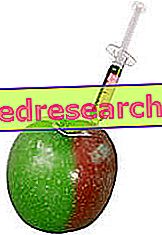
The taste
The flavor acts as an indicator of the elemental composition. and can be of six types: acid, saline, sugary, alkaline, bitter and acrid. The basic composition of the main types is the following:
- - sugary: water and earth
- - acid: fire and earth;
- - acre: water and fire;
- - alkaline: water and air;
- - saline: air and earth.
Flavor is an element that is perceived directly, but the composition, properties and probable activity of the drug are elements whose knowledge is possible only deductively and by observation of the effects of taste on the body. For example, the sugary taste causes an increase in phlegm, which is heavy and obtuse, from which it can be deduced, due to the law of constitutive uniformity, that if the taste is heavy, the drug also has this characteristic. This is further evidenced by the law of deformity, as the remedy causes a decrease in bile and air, unlike Earth and water.
After identifying the elemental composition of a medicament by its taste, it is possible to deduce its properties. A drug with main constituents Terra e Acqua will have characteristics of heaviness, stability, dullness, smoothness, oiliness and dryness. Consequently that drug will have a stabilizing action, of concentration and physical and mental control; it will therefore be particularly effective in disturbances of the Air element.
Pharmaceutical methods
In Tibet grow many medicinal plants, many of which are not easily found in other parts of the world. Despite the great use of animal and mineral substances, plant remedies are still the most widely used product. Tibetan pharmacognosy is not only an art but a refined science, handed down from the time of Shakyamuni Buddha, for more than 2500 years. It studies plants in their raw state, but also their natural derivatives and, in a wider area, includes knowledge of history, distribution, cultivation, collection, selection, preparation, trade, identification, evaluation, conservation and use of substances that have effect on human health and other animals. Often a Tibetan pharmacist, who is usually also a doctor, uses raw drugs as therapeutic agents, but generally the main active ingredients are extracted by various means and used in a more specific manner.
Preparation of medicines
The collection of medicinal substances takes place on a large scale and although, in a traditional system such as the Tibetan one, the distraction of the collector can still constitute a significant factor of error, those involved in this phase are usually skilled and expert in the art. to identify, select and collect medicinal plants.
The method cannot do without a deep knowledge of the geographical origin and the habitat of the plants, because each plant has a natural intrinsic efficacy influenced by its origin and its habitat. Harvesting should only be carried out in areas where plants grow in appropriate conditions. Cold type medicinal plants should grow in places not directly exposed to the sun or other heat sources. Hot type medicinal plants should be grown in areas exposed to direct sunlight. In addition to this, the cultivated area should be clean, dry or sufficiently humid, at the right temperature and free from weeds and poisonous animals. It is particularly important to know the appropriate time for harvesting, since the nature and quantity of the components vary considerably in the different species. The most suitable moment is the period in which the part of the plant that constitutes the drug contains the maximum amount of active ingredients and when the material can dry in such a way as to guarantee the highest quality and the best appearance.
Some collection rules
- Roots, stems and branches are harvested in autumn, when the vegetative process is finished.
- Leaves, sap and seeds are harvested during the months of flowering, when photosynthesis is more active.
- Flowers, fruits and seeds in the summer, during pollination and at the time of maturation.
- Roots and secretions in spring, before the vegetative process begins.
- Purgative medicinal plants are harvested after the autumn, when the vegetative process is finished.
- Medicinal emetic plants instead in spring, as soon as the vegetative process has begun.
Harvesting is done manually, but mechanical means could conveniently be used. However, the Tibetan pharmacist is of the opinion that naturally prepared drugs undergo less change in their original structure and therefore have greater efficacy.
drying
The correct drying of the plant material is a fundamental factor in the preparation of the drug, because it allows the elimination of humidity, so as to guarantee a good maintenance of the qualities and prevent the molding, bacterial action and other possible alterations. The most widely used method is air drying, which can take place in the sun or in the shade, depending on the material. After a first cleaning, the medicinal plants are cut and pounded lightly, before putting them to dry. Hot drugs are dried in the sun, cold ones in the shade. One of the advantages of shade is that in this way the preservation of natural color is promoted. Proper and effective drying involves temperature control and air regulation. If the temperature and air flow are adequately regulated, the drug dries perfectly and reaches the highest quality, both in its constitution and appearance. A very important factor in the preparation is the drying of the plants immediately after harvesting, because this favors the preservation of the intrinsic properties of the medicinal substance. Furthermore, the plant must not, under any circumstances, have any contact with smoke, moisture or other drugs.
Continue: Tibetan medicine and pharmacognosy »



